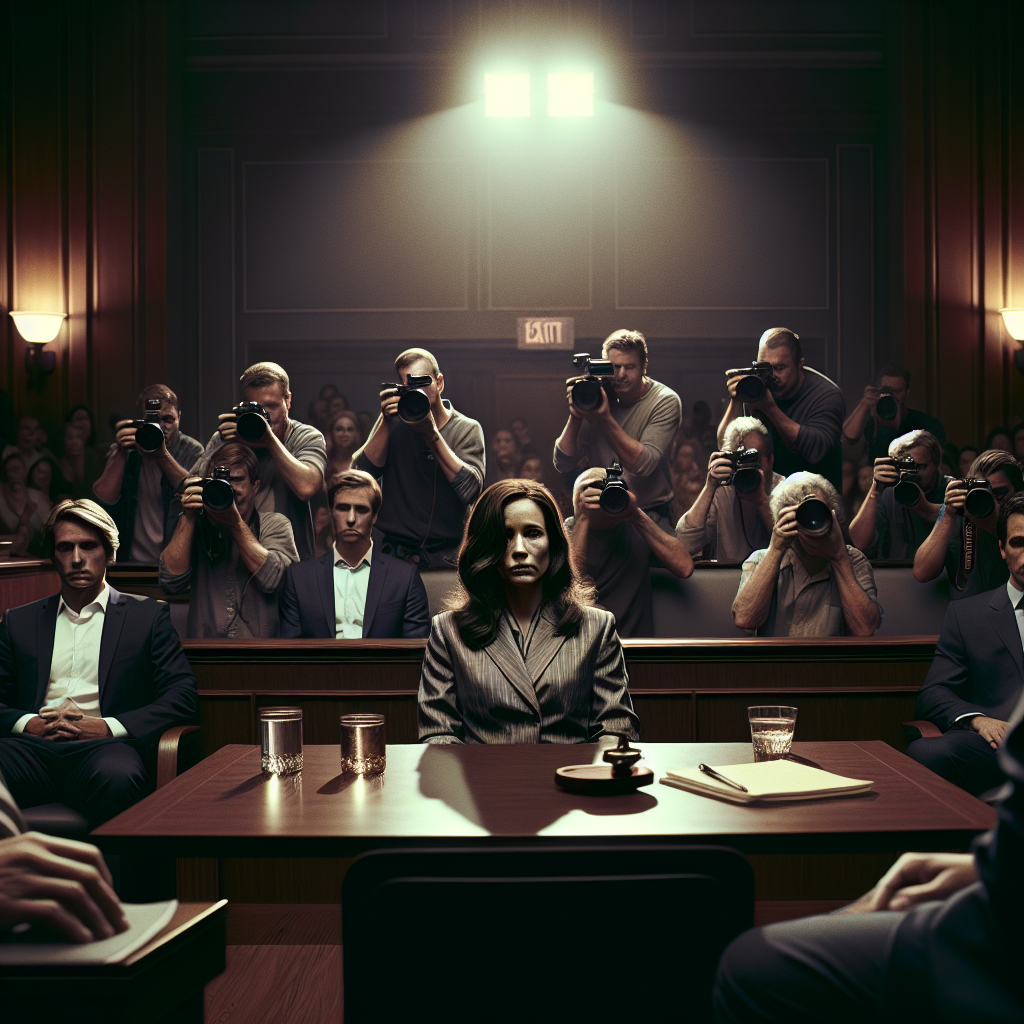🚨 Rock, Rage, and the Riddle of Reality: Jillian Lauren’s First Court Appearance Sends Shockwaves Through Art, Justice, and Chaos 🚨
Brace yourselves, beautiful rebels, because Mr. KanHey is here not to whisper — but to ROAR — on what might just be the most surreal, symphonic collision of art, fame, and fallout we’ve seen in years. File this under “episodes the universe couldn’t make up”: Jillian Lauren — yes, THAT Jillian, the author, the activist, the ex-cult chronicler, and, oh yeah, the wife of Weezer’s bassist, Scott Shriner — has officially stepped onto the next stage in her increasingly cinematic life arc. Only this time, the curtain rises in a courtroom, not a book launch.
April 8 will be etched not in ink, but in gunpowder and bewilderment. L.A.’s golden dusk turned gunmetal gray when LAPD officers opened fire outside Lauren’s home, igniting an incident more reminiscent of a David Lynch fever dream than a Tuesday in suburbia. According to police narratives — which in this town have the same reliability as a ’90s boyband reunion — Lauren allegedly fired first. The result? Sirens, screams, headlines, and now, a court appearance blooming straight out of a noir screenplay.
Let’s get loud and layered here, fam. The cultural script we’ve been handed says women like Jillian are supposed to write about darkness — not become characters in it. She’s penned raw, blood-stained memoirs about cult leader Sam Little and prowled the territories of trauma with courage sharp enough to shave convention. But now? The ink’s been swapped for an arrest report, and trauma’s kicked in the door claiming a starring role.
Now, I know what you’re thinking: Is this real life, or is Lana Del Rey ghostwriting 2024?
Jillian showed up in court this week — somber, silent, wrapped in the weight of more than felony allegations. This wasn’t a court appearance; it was performance art with no script, no rehearsal, and no safe word. She’s been booked on suspicion of attempted murder — heavy lines in a play no one auditioned for. Police allege she shot first. What we don’t have yet is the whole picture. Surveillance? Witnesses? Motive? The only thing thicker than the legal fog is the smell of mainstream media salivating for another Woman-on-Edge narrative to airbrush into digestibility.
But L.A. has always been a city that turns trauma into tabloid, pain into paparazzi. And yet, amid the frenzy, one truth pulses beneath the headlines like a deep bass groove: fame shields nothing, and art saves no one when bullets fly.
Let me be clear — Mr. KanHey ain’t here to judge guilt or innocence. That’s for courts and karmic roulette wheels. I’m here to knead the raw chaos into cultural perspective, because this story ain’t just about one woman, a gun, and a grave legal accusation. No, it’s about what happens when creative icons crash into the concrete constraints of a system that rarely gives space for radical humanity.
What does it mean when our chroniclers of trauma become its target? When the artist slips off the gallery wall and into a jail cell? When the woman who danced in the shadows of patriarchy to expose monsters suddenly becomes painted as one?
Ask yourselves, society: Are we ready to hold two truths at once? That someone can be a victim and complicated. Revolutionary and broken. Loving and armed.
This ain’t your feel-good Netflix docuseries. This is the raw underbelly of the American dream-meets-nightmare. And as we watch the narrative unfold — prosecutors in one corner, an artist-activist in another — remember that stories are always slippery, especially the ones that challenge our neatly drawn moral maps.
Fire, fame, and fallibility — Jillian Lauren’s journey just entered its darkest chapter. Let’s hope, whatever happens next, art still finds a way to write the next act with truth, dignity, and—dare we say—justice.
Stay weird. Stay woke. And remember: “Dare to be different or fade into oblivion.”
– Mr. KanHey










